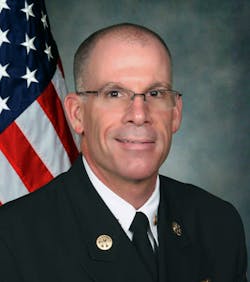As Firehouse Sees It: Mission Success
On Oct. 14, 1987, the world watched with anxiety what would eventually become one of the highest profile, individual civilian rescues in American history. Eighteen-month-old Jessica McClure fell into an 8-inch well casing in her aunt’s backyard in Midland, TX. For the next 45 hours, Midland firefighters and rescuers from all reaches worked tirelessly to extricate Jessica from where she was lodged 22 feet below the surface.
The challenges of McClure’s rescue proved far greater than what was initially thought, but thanks to the tireless efforts and combined ingenuity of many, young Jessica was successfully rescued and has since gone on to raise two kids and live a normal life—Mission Success.
Fast-forward 23 years to Aug. 5, 2010, and travel 5,000 miles south of Midland, TX, to the San José copper-gold mine in northern Chile. Thirty-three miners suddenly become trapped more than 2,000 feet underground, 3 miles from the mine's entrance. Facing diminishing odds, dwindling hope and countless setbacks, three separate drilling rig teams, nearly every Chilean government ministry, representatives of the United States’ NASA space agency, and a dozen corporations from around the world worked hand in hand for an incredible 69 days to rescue all 33 men.
Once again, while the challenges were far more complex than initially expected, the tenacity of the world’s rescue professionals and the ingenuity of the countless non-traditional first responders helped overcome these challenges, leading to the successful extraction of 33 miners—Mission Success.
It’s now June 23, 2018. The location is the Tham Luang cave in Mae Sai, Thailand. Twelve boys ranging in age from 11 to 16, led by their 25-year-old soccer coach, ventured deep into the cave when, without warning, their only escape route was cut off by rising floodwaters driven by torrential rainfall. Outside the cave, search crews began gathering in preparation for what most assumed would be a standard search-and-rescue operation. As heavy rains began to fill the cave, rescuers were forced to retreat for their own safety.
For 10 days, the boys and their coach were feared to be lost and many assumed they would not emerge alive. Then the news broke that a rescue diver nearly 2 miles inside the cave had found them alive, huddled in an isolated chamber, fighting off the elements and starvation.
In the days that followed, before any of the trapped young boys or their coach could be rescued, a highly experienced veteran Thai Navy Seal would drown in the initial phases of the rescue mission.
Emotionally taxed but not beaten, the now multi-national rescue teams deployed deep into the cave with food, medical supplies, a doctor and supplemental SCUBA equipment in preparation for what could ultimately become a prolonged rescue operation.
As plans to reduce the water levels within the cave with pumps became futile, coupled with the forecast of additional rain and diminishing oxygen levels in the cave, the rescue strategy was quickly modified, and multiple teams of divers were sent in and effectively performed an underwater relay rescue of each boy and their coach without further incident—Mission Success.
To successfully complete these missions, faced with the challenges that each of these agencies had to endure, is extraordinary. These events will forever be remembered in the annals of history, but more importantly, what can we learn from these events to better prepare our organizations and ourselves for that once-in-a-career incident?
The initial assessment, size-up and rescue strategy in each case failed. As an incident commander, are you able to step back, review, revise and redeploy in the most stressful and pressure-filled moments of your career? Add the fact that one of your own—a veteran, highly trained and skilled professional—is lost in the early stages of the rescue. What would you do? When the challenges of the incident extend beyond your expertise, do you have the courage to put your ego aside and ask for help from your neighbors and non-traditional responders?
An event of this nature may never occur within your response district or community, but I challenge you to ask yourself, if such an incident did occur, would you be able to you speak with confidence and firm acknowledgement, “Mission Success.”
About the Author

Timothy E. Sendelbach
Editor-in-Chief
Timothy E. Sendelbach is a 30-year student and educator of the fire and emergency services, and former editor-in-chief for Firehouse. He has served as an assistant fire chief with the North Las Vegas, NV, Fire Department, as the chief of training for Savannah (GA) Fire & Emergency Services and as assistant fire chief for Missouri City, TX, Fire & Rescue Services. He is a credentialed Chief Fire Officer and Chief Training Officer and has earned a master’s degree in leadership from Bellevue University, bachelor’s degrees in fire administration and arson and an associate’s degree in emergency medical care from Eastern Kentucky University.
